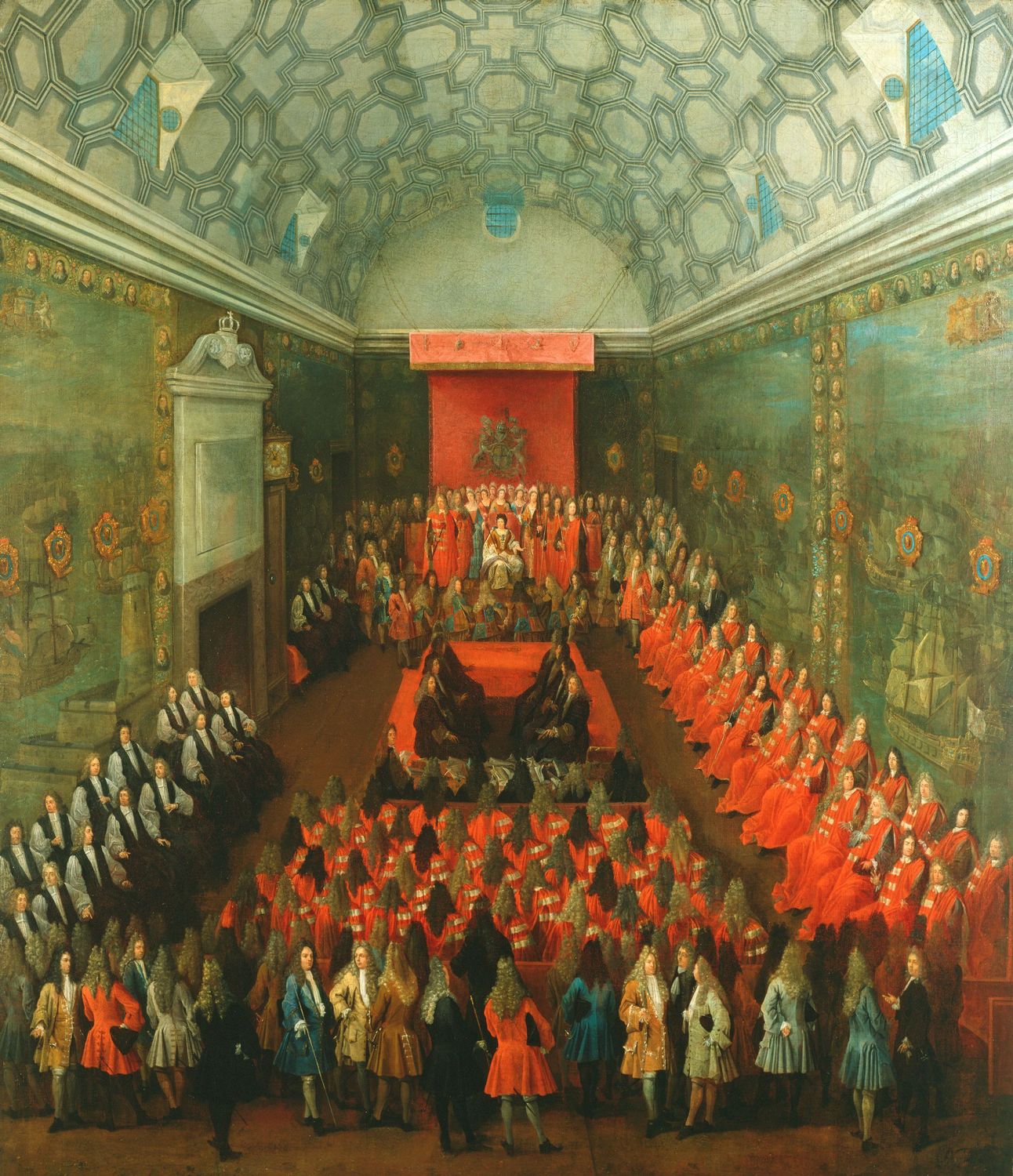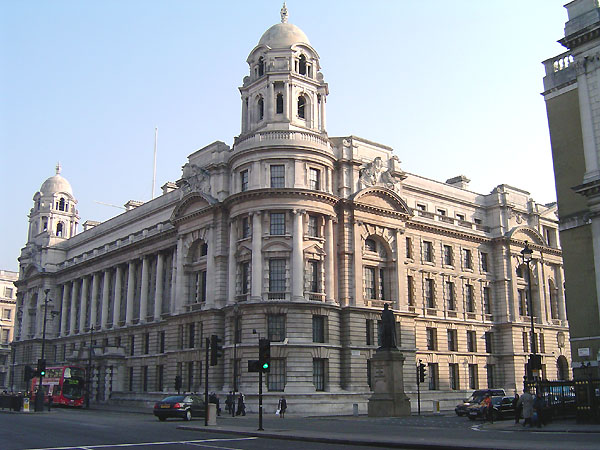|
Earl Of Courtown
The Earl of Courtown, in the County of Wexford, is a title in the Peerage of Ireland. It was created on 12 April 1762 for James Stopford, 1st Baron Courtown. He had previously represented County Wexford and Fethard in the Irish House of Commons. Stopford had already been created Baron Courtown, of Courtown in the County of Wexford, on 19 September 1758, and was made Viscount Stopford at the same time he was given the earldom. These titles are also in the Peerage of Ireland. He was succeeded by his eldest son, the second Earl. He was a Tory politician and served under William Pitt the Younger as Treasurer of the Household from 1784 to 1793. On 7 June 1796, he was created Baron Saltersford, of Saltersford in the County Palatine of Chester, in the Peerage of Great Britain. This title gave him and his descendants an automatic seat in the House of Lords. His eldest son, the third Earl, was also a Tory politician. He succeeded his father as Treasurer of the Household and was also ... [...More Info...] [...Related Items...] OR: [Wikipedia] [Google] [Baidu] |
Coronet Of A British Earl
In British heraldry, a coronet is a type of crown that is a mark of rank of non-reigning members of the royal family and peers. In other languages, this distinction is not made, and usually the same word for ''crown'' is used irrespective of rank (, , , , , etc.) In this use, the English ''coronet'' is a purely technical term for all heraldic images of crowns not used by a sovereign. A Coronet is another type of crown, but is reserved for the nobility - Dukes, Marquesses, Earls, Viscounts and Barons. The specific design and attributes of the crown or coronet signifies the hierarchy and ranking of its owner. Certain physical coronets are worn by the British peerage on rare ceremonial occasions, such as the coronation of the monarch. These are also sometimes depicted in heraldry, and called coronets of rank in heraldic usage. Their shape varies depending on the wearer's rank in the peerage, according to models laid down in the 16th century. Similar depictions of crowns of rank () ... [...More Info...] [...Related Items...] OR: [Wikipedia] [Google] [Baidu] |
House Of Lords
The House of Lords is the upper house of the Parliament of the United Kingdom. Like the lower house, the House of Commons of the United Kingdom, House of Commons, it meets in the Palace of Westminster in London, England. One of the oldest extant institutions in the world, its origins lie in the early 11th century and the emergence of bicameralism in the 13th century. In contrast to the House of Commons, membership of the Lords is not generally acquired by Elections in the United Kingdom, election. Most members are Life peer, appointed for life, on either a political or non-political basis. House of Lords Act 1999, Hereditary membership was limited in 1999 to 92 List of excepted hereditary peers, excepted hereditary peers: 90 elected through By-elections to the House of Lords, internal by-elections, plus the Earl Marshal and Lord Great Chamberlain as members Ex officio member, ''ex officio''. No members directly inherit their seats any longer. The House of Lords also includes ... [...More Info...] [...Related Items...] OR: [Wikipedia] [Google] [Baidu] |
Colonel (United Kingdom)
Colonel (Col) is a rank of the British Army and Royal Marines, ranking below Brigadier (United Kingdom), brigadier, and above Lieutenant colonel (United Kingdom), lieutenant colonel. British colonels are not usually field commanders; typically they serve as Staff (military), staff officers between field commands at battalion and brigade level. The insignia is two diamond-shaped British Army officer rank insignia, pips (properly called Order of the Bath, "Bath Stars") below a crown. The crown has varied in the past with different monarchs; Elizabeth II of the United Kingdom, Elizabeth II's reign used St Edward's Crown. The rank is equivalent to Captain (Royal Navy), captain in the Royal Navy and group captain in the Royal Air Force. Etymology The rank of colonel was popularised by the tercios that were employed in the Spanish Army during the 16th and 17th centuries. General Gonzalo Fernández de Córdoba divided his troops into ''coronelías'' (meaning "column of soldiers" from t ... [...More Info...] [...Related Items...] OR: [Wikipedia] [Google] [Baidu] |
Lieutenant-general
Lieutenant general (Lt Gen, LTG and similar) is a military rank used in many countries. The rank traces its origins to the Middle Ages, where the title of lieutenant general was held by the second-in-command on the battlefield, who was normally subordinate to a captain general. In modern armies, lieutenant general normally ranks immediately below general (or colonel general) and above major general; it is equivalent to the navy rank of vice admiral, and in air forces with a separate rank structure, it is equivalent to air marshal. In the United States, a lieutenant general has a three star insignia and commands an army corps, typically made up of three Division (military), army divisions, and consisting of around 60,000 to 70,000 soldiers. The seeming incongruity that a lieutenant general outranks a major general (whereas a Major (rank), major outranks a lieutenant) is due to the derivation of major general from sergeant major general, which was a rank subordinate to lieutenan ... [...More Info...] [...Related Items...] OR: [Wikipedia] [Google] [Baidu] |
Royal Navy
The Royal Navy (RN) is the naval warfare force of the United Kingdom. It is a component of His Majesty's Naval Service, and its officers hold their commissions from the King of the United Kingdom, King. Although warships were used by Kingdom of England, English and Kingdom of Scotland, Scottish kings from the early Middle Ages, medieval period, the first major maritime engagements were fought in the Hundred Years' War against Kingdom of France, France. The modern Royal Navy traces its origins to the English Navy of the early 16th century; the oldest of the British Armed Forces, UK's armed services, it is consequently known as the Senior Service. From the early 18th century until the World War II, Second World War, it was the world's most powerful navy. The Royal Navy played a key part in establishing and defending the British Empire, and four Imperial fortress colonies and a string of imperial bases and coaling stations secured the Royal Navy's ability to assert naval superior ... [...More Info...] [...Related Items...] OR: [Wikipedia] [Google] [Baidu] |
Conservative Party (UK)
The Conservative and Unionist Party, commonly the Conservative Party and colloquially known as the Tories, is one of the two main political parties in the United Kingdom, along with the Labour Party (UK), Labour Party. The party sits on the Centre-right politics, centre-right to Right-wing politics, right-wing of the Left–right political spectrum, left-right political spectrum. Following its defeat by Labour at the 2024 United Kingdom general election, 2024 general election it is currently the second-largest party by the number of votes cast and number of seats in the House of Commons of the United Kingdom, House of Commons; as such it has the formal parliamentary role of His Majesty's Most Loyal Opposition. It encompasses various ideological factions including One-nation conservatism, one-nation conservatives, Thatcherism, Thatcherites and Traditionalist conservatism, traditionalist conservatives. There have been 20 Conservative Prime Minister of the United Kingdom, prime minis ... [...More Info...] [...Related Items...] OR: [Wikipedia] [Google] [Baidu] |
House Of Lords Act 1999
The House of Lords Act 1999 (c. 34) is an act of the Parliament of the United Kingdom that reformed the House of Lords, one of the chambers of Parliament. The Act was given royal assent on 11 November 1999. For centuries, the House of Lords had included several hundred members who inherited their seats (hereditary peers); the Act removed such a right. However, as part of a compromise, the Act allowed ninety-two hereditary peers to remain in the House. Another ten were created life peers to enable them to remain in the House. The Act decreased the membership of the House from 1,330 in October 1999 to 669 in March 2000. As another result of the Act, the majority of the Lords were thence life peers, whose numbers had been gradually increasing since the Life Peerages Act 1958. As of June 2023, there were members of the House of Lords, of whom were senior Church of England bishops, whose representation in the House is governed by the Lords Spiritual (Women) Act 2015. Backgro ... [...More Info...] [...Related Items...] OR: [Wikipedia] [Google] [Baidu] |
List Of Excepted Hereditary Peers
Under the reforms of the House of Lords Act 1999, the majority of hereditary peers lost the right to sit as members of the House of Lords, the upper house of the Parliament of the United Kingdom. Section 2 of the Act, however, provides an exception from this general exclusion of membership for up to 92 hereditary peers: 90 to be elected by the House, as well as the holders of two royal offices, the Earl Marshal and the Lord Great Chamberlain, who sit as Ex officio member, ''ex officio'' members. The initial cohort of excepted hereditary peers were elected in the 1999 House of Lords elections. Between 1999 and November 2002, vacancies among this group were filled by runners-up in the 1999 election. Since then, by-elections to the House of Lords have filled vacancies. Candidature for both the 1999 elections and subsequent by-elections is restricted to peers in the Peerage of England, Peerages of England, Peerage of Scotland, Scotland, Peerage of Great Britain, Great Britain and the P ... [...More Info...] [...Related Items...] OR: [Wikipedia] [Google] [Baidu] |
War Office
The War Office has referred to several British government organisations throughout history, all relating to the army. It was a department of the British Government responsible for the administration of the British Army between 1857 and 1964, at which point its functions were transferred to the new Ministry of Defence (United Kingdom), Ministry of Defence (MoD). This article contains text from this source, which is available under th Open Government Licence v3.0 © Crown copyright It was equivalent to the Admiralty (United Kingdom), Admiralty at that time, which was responsible for the Royal Navy (RN), and (much later) the Air Ministry, which oversaw the Royal Air Force (RAF). The name 'Old War Office' is also given to the former home of the department, located at the junction of Horse Guards Avenue and Whitehall in central London. The landmark building was sold on 1 March 2016 by HM Government for more than British pound, £350 million, on a 250-year lease for conversion int ... [...More Info...] [...Related Items...] OR: [Wikipedia] [Google] [Baidu] |
Lord Lieutenant Of County Wexford
This is a list of people who have served as Lord-Lieutenant of Wexford. There were lieutenants of counties in Ireland until the reign of James II, when they were renamed governors. The office of Lord Lieutenant was recreated on 23 August 1831. * The Hon. Edward FitzGerald Villiers: 1691–''ca''.1693 † ''ca''.1693 Villiers family * Arthur Gore, 2nd Earl of Arran: 1760–1768 * Arthur Annesley, 1st Earl of Mountnorris: Beatson's ''Political Index'' (1806) vol. IIIp. 374 1768–1816 (died 1816) * George Ogle: 1784 –1814 (died 1814) * Charles Loftus, 1st Marquess of Ely: –1806 (died 1806) * John Loftus, 2nd Marquess of Ely: 1805–1831 * George Annesley, 2nd Earl of Mountnorris: –1831''The Royal Kalendar'' for 1831p. 389 * Charles Tottenham: 1815J. M. CollingeTOTTENHAM, Charles (1768-1843), of Ballycurry, co. Wicklow.in ''The History of Parliament: the House of Commons 1790-1820'' (1986).–1831 * James Stopford, 3rd Earl of Courtown: 1813–1831 Lord Lieutena ... [...More Info...] [...Related Items...] OR: [Wikipedia] [Google] [Baidu] |




